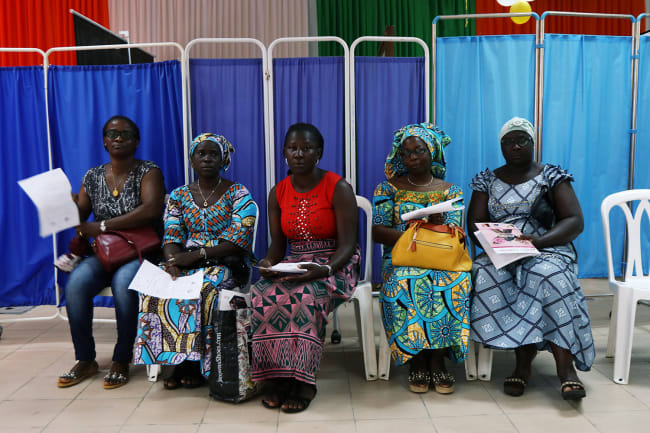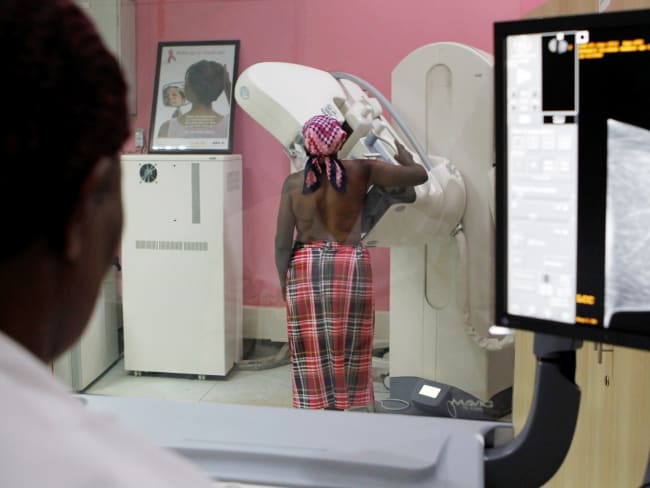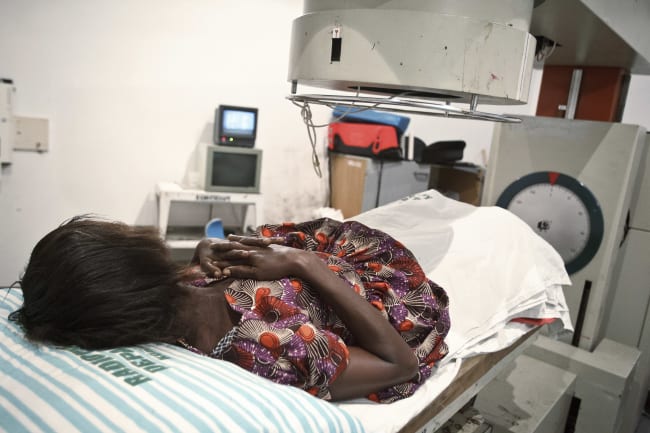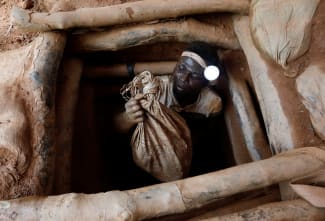Ada, a bright-eyed and curious six-year-old girl, lived with her mother and three siblings in a town in southeastern Nigeria. She often dreamed of becoming a doctor, but those dreams were cut short after she was diagnosed with neuroblastoma, a rare and aggressive form of childhood cancer. Ada's mother, a widow struggling to raise four children on her own, was devastated by the news. She knew the road ahead would be difficult, but she never anticipated the immensity of the challenges. From the moment of diagnosis, Ada's mother found herself caught in a merciless cycle of despair. The first hurdle they faced was the exorbitant cost of necessary medical tests and procedures. In a country where health-care expenses can quickly become insurmountable, the latest report on overall cost citing increases of more 15.8 percent, Ada's mother had to make heart-breaking decisions.
An estimated four hundred thousand cases of childhood cancer occur annually
She sold her few possessions and borrowed money from friends and relatives, hoping to provide her daughter with the best chance of survival. The financial burden, though, was just the beginning. The lack of availability of chemotherapy drugs in Nigeria added even more weight to their already heavy load. Ada's mother, driven by love and determination, struggled to get the medication her daughter desperately needed, but was met with additional obstacles at every turn, including overwhelming wait times, limited medical facilities, and a scarcity of essential medicines. With each passing day without adequate treatment, Ada's hope grew increasingly fragile and her young life was cut shorter due to complications from her cancer. Her story is not unique. Countless children in low- and middle-income countries face similar fates every day due to inadequate access to life-saving chemotherapy.
The stark reality is that in many low- and middle-income countries like Nigeria, the statistics surrounding childhood cancer are heart wrenching. Globally, an estimated four hundred thousand cases of childhood cancer occur annually, and more than 80 percent of the total incidence is observed in low- and middle-income countries. The cure rate in these countries falls below 30 percent, a stark contrast to the 80 percent cure rate in high-income countries. Without access to vital chemotherapeutic agents, children are vulnerable to unnecessary suffering and premature death. As a dedicated pediatric oncologist in Nigeria, I have witnessed the devastating impact of limited access to chemotherapy on countless children and their families. One of the primary reasons for the dire situation is the high rate of late-stage cancer diagnoses. Limited awareness about the signs and symptoms of cancer, coupled with restricted access to medical care, results in delayed diagnosis and treatment for many children. By the time families seek medical assistance, their child's cancer has often progressed to an advanced stage, making treatment significantly more challenging and reducing the chances of survival, as was the case with Ada.
Collaborating for Change and Saving Lives
The struggles, however, do not end there. Families in low- and middle-income countries face immense financial barriers to accessing chemotherapy drugs. The exorbitant cost of these medications is unaffordable for many families, and government assistance programs and insurance coverage are often limited or nonexistent. One cycle of chemotherapy costs approximately $100 to $400. This is deeply concerning, particularly in a country where two-thirds of the population survives on less than $2 a day. Parents find themselves in an agonizing position, forced to sell their meager possessions or take on burdensome loans to provide their child with the treatment they need. The devastating consequences of poor access to chemotherapy extend beyond the physical suffering of the children. Families experience an overwhelming emotional toll, feeling helpless and burdened by the insurmountable obstacles they face. It is a daily struggle against time, finances, and a health-care system ill equipped to handle the demands of childhood cancer.

In the face of this urgent crisis, ways to address the heart-breaking reality of poor access to chemotherapy in low- and middle-income countries are nonetheless available. One of the crucial solutions lies in increased investment in health-care infrastructure and resources within these countries. Governments and international organizations should prioritize the availability and affordability of chemotherapeutic medicines. This includes establishing robust supply chains that ensure a consistent and adequate stock of essential drugs. Moreover, medical facilities should be equipped with the necessary infrastructure and equipment to administer chemotherapy effectively. By strengthening health-care systems, doctors can provide children with timely and appropriate treatment, significantly improving their chances of survival.
Another vital aspect of addressing this crisis is enhancing access to medical care and support services for cancer-affected families. This includes raising awareness about childhood cancer, its early signs, and the importance of seeking medical attention promptly. Educational campaigns can be implemented to empower communities and health-care workers with knowledge and equip them to recognize the warning signs. Additionally, health-care providers need specialized training to enhance their ability to diagnose and treat childhood cancers. In building a skilled workforce, we can ensure that children receive timely and accurate diagnoses, leading to more effective treatment outcomes.
Further, support services should be made available to families throughout their cancer journey. This includes providing psychosocial support to parents and caregivers, as they grapple with the emotional toll of their child's illness. Support groups, counseling services, and financial assistance programs can help alleviate the burden and ensure that families have the necessary resources to navigate this challenging journey.
The cure rate in LMICs falls below 30 percent, a stark contrast to the 80 percent cure rate in high-income countries
Although the challenges faced by low- and middle-income countries may seem insurmountable, several global initiatives strive to address this crisis. The Global Initiative for Childhood Cancer, led by the World Health Organization, is a prime example. This effort aims to increase the survival rate of children with cancer by 60 percent by 2030. It focuses on strengthening health systems, improving access to essential medicines, and providing training for health-care providers and families. By supporting and collaborating with such initiatives, physicians can amplify their impact and drive positive change on a global scale.
As a practicing oncologist in Nigeria, I am witness to the urgent need for action and support. I implore each and every one of you, the general public, to lend your voice and make a difference. Share the stories of children like Ada, whose lives have been cut short due to inadequate access to chemotherapy. Spread awareness about the challenges faced by families in low- and middle-income countries and the urgent need for change.
Together, we can advocate for increased funding and resources for childhood cancer care. This can be achieved by donating to reputable organizations, volunteering at hospitals, and organizing effective fundraising events, all of which empower doctors to transform the lives of children battling cancer by ensuring access to adequate care and life-saving chemotherapy. Additionally, we can urge governments to prioritize the health and well-being of their youngest citizens by investing in health-care infrastructure and making essential medicines accessible and affordable. By coming together as a global community, we can ensure that no child suffers unnecessarily from cancer because of a lack of access to life-saving treatment.
The poor access to chemotherapy in low- and middle-income countries is a global health crisis that demands our immediate attention. Ada's story is a poignant reminder of the urgent need for change. Through increased investment in health-care infrastructure, enhanced availability and affordability of chemotherapeutic medicines, and comprehensive awareness campaigns, we can make a tangible difference in the lives of children battling cancer. Let us come together, united in our commitment to provide every child with a fighting chance—a chance to survive, to dream, and to shape a brighter future.













